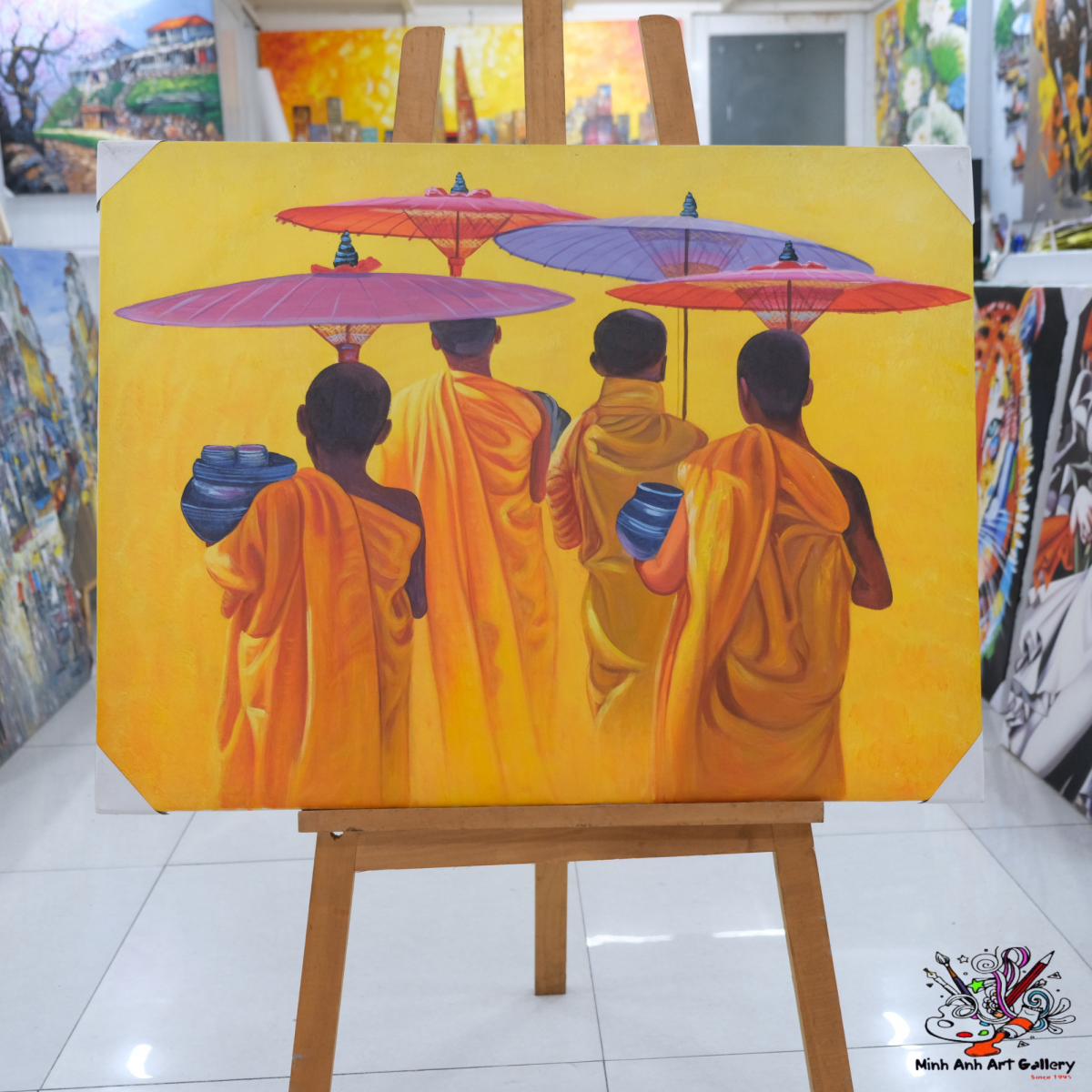Color isn't just a visual treat—it's a psychological powerhouse. In the context of art gallery exhibitions, it’s a silent guide, emotional trigger, and narrative enhancer all at once.

Ever wonder why reds make you feel energized or blues calm you down? That's no coincidence. Red stirs excitement and urgency, while blue soothes the mind. When curating a fine art collection, understanding this emotional palette helps shape the mood of an exhibit.
Different cultures assign different meanings to colors. White symbolizes purity in Western societies but mourning in others. A curated art collection must consider the cultural context of its audience to ensure colors communicate the intended message.
Color isn’t just pretty—it’s powerful. By placing vibrant colors at entrances or transition points, curators subtly direct foot traffic through an art collection gallery.
Warm colors (like red, orange) push forward and grab attention. Cool tones (like blue, green) recede and calm. Used effectively, they lead the viewer through the gallery without a single signboard.
A splash of color in a neutral-toned room can pull visitors like a magnet. This technique is popular in private art galleries seeking to highlight signature pieces in a broader collection.
The wall behind the painting matters just as much as the artwork. A bold red canvas against a pale grey wall pops with emotion. Meanwhile, earthy tones behind traditional works make them feel timeless.
Contemporary pieces often boast bright, unconventional colors. To let them breathe, many curators use white or neutral walls—clean, minimalistic, allowing the artwork to scream (in a good way).
In contrast, classic art benefits from more subdued surroundings. Deep greens and burgundy walls can evoke elegance and history, enhancing the gravitas of the fine art collection.

In smaller spaces like private art galleries, warm hues can make the space cozy and inviting, perfect for personalized viewing. Soft lighting with beige or terracotta tones enhances the intimacy of the setting.
Minh Anh Art Gallery, for example, might choose earth tones for its Vietnamese heritage or whites for a minimalist modern vibe. Color becomes a brand signature.
Natural light changes throughout the day, affecting how colors look. A bright yellow in daylight may dull under LEDs. Proper lighting ensures the colors in your art collection remain consistent.
Cool lighting enhances blues and greens; warm lighting flatters reds and yellows. Choosing the right temperature can make or break how a piece is perceived in a contemporary art gallery.
Color boosts memory. People are more likely to remember artwork—and the gallery itself—if emotionally resonant colors are used thoughtfully in a curated art collection.
Color doesn’t have to match across pieces—but it should relate. Galleries often use harmony or contrast to build cohesion in a modern art collection.
One trick? Arrange works from light to dark or warm to cool. This storytelling method keeps visitors emotionally engaged throughout the art gallery collection tour.
Group sad, blue-toned works in one room. Put fiery, passionate reds in another. This technique builds an emotional journey across the art collection gallery.
A balanced mix of primary (red, blue, yellow), secondary (green, orange, purple), and tertiary colors keeps the eye interested. Overloading one hue can fatigue the viewer.
Pairing opposites (blue and orange, red and green) adds visual excitement. It’s a technique frequently used in vibrant art gallery exhibitions.
Renowned exhibitions at The Louvre or The Met often use dark blues and velvets behind Renaissance art, enhancing detail and drama.
Modern spaces go for crisp whites and spotlights. Color comes only from the art itself, letting each piece stand on its own merit.
Yes, color still matters—even digitally. Online displays must be color-accurate. Backgrounds should not distract from the art, and lighting simulations are often used to mimic gallery conditions.
One Minh Anh tour used progressing wall colors—from cool blues to fiery reds—to mirror human emotion. Visitors didn’t just walk through rooms; they felt them.
Sketch a color map of your space. Where should emotions rise? Where should they calm? Design your layout accordingly.
Use removable panels or paint to test color environments. Rotate colors every quarter to refresh the energy of the art collection gallery.

Color isn't just decoration—it's communication. In the world of art gallery exhibitions, it shapes experiences, sparks emotions, and deepens connections with the art. Whether you’re managing a sprawling art collection online or a small private art gallery, color placement can elevate your collection from a passive display to a deeply emotional journey. Use it wisely, and your visitors won’t just remember your art—they’ll feel it.
1. Does color placement really affect how art is perceived?
Absolutely. Colors influence mood, draw attention, and shape how we interpret space and artwork.
2. What color is best for a modern art collection?
Neutrals like white or gray often work best, letting bold, contemporary pieces pop.
3. How often should galleries update color schemes?
At least seasonally. Regular updates keep exhibits fresh and encourage repeat visits.
4. Can color be used to tell a story in an exhibition?
Definitely. Sequence colors to match an emotional or thematic arc and guide visitors on a journey.
5. Is color still important in online exhibitions?
Yes. Proper lighting, color accuracy, and minimal backgrounds are crucial to a successful digital presentation.
message:
For original handcrafted oil paintings and personalized gallery tours, visit Minh Anh Art Gallery at 101 Bui Vien St, District 1, Ho Chi Minh City, Vietnam. Explore our Collection and let art color your world. Call us at (+84) 962 720 484 or email minhanhart.vn@gmail.com.